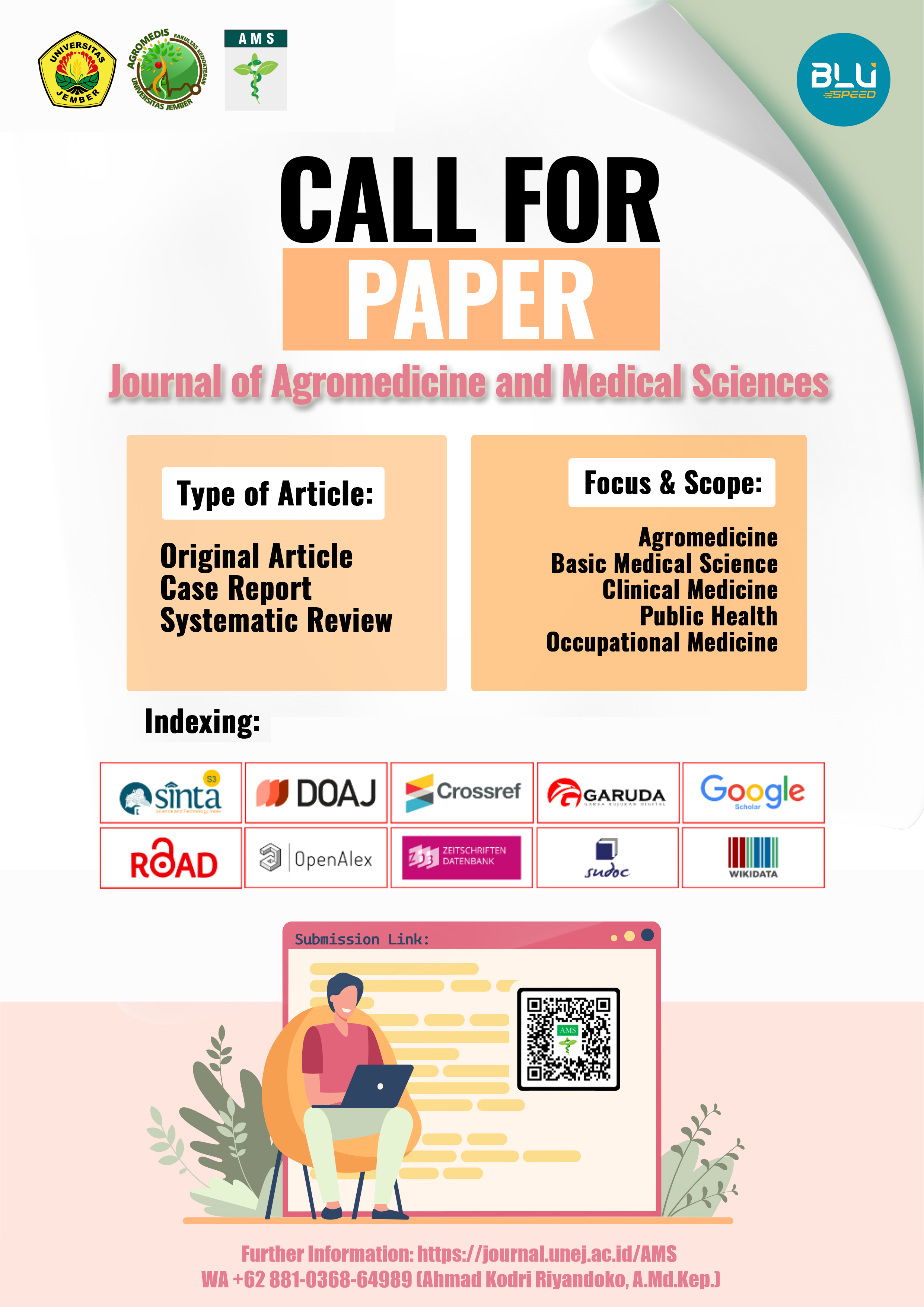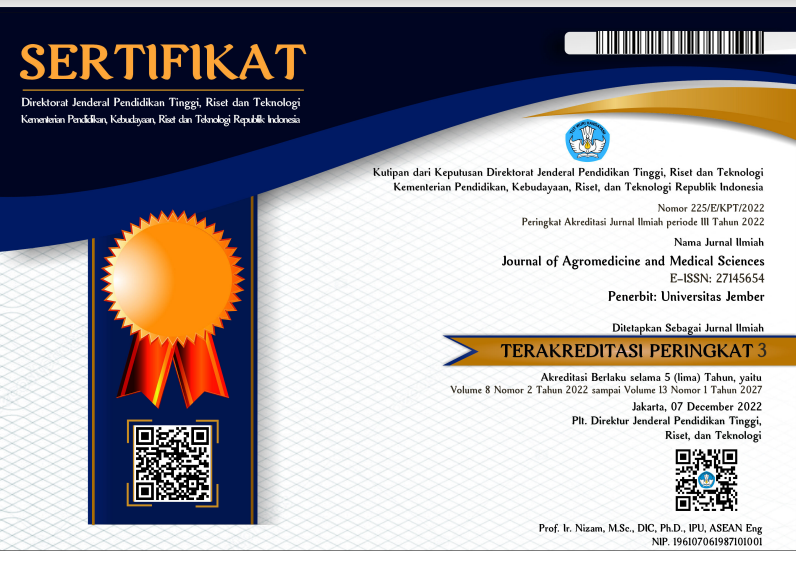Toxicity of Ceremai (Phyllanthus acidus) and Zodia (Evodia suaveolens) Leaf Extracts on Mortality of Aedes aegypti Larvae
DOI:
https://doi.org/10.19184/ams.v10i3.4757Keywords:
zodiaAbstract
The vector that carries Dengue Hemorrhagic Fever (DHF) is Aedes aegypti. Various strategies have been implemented to control the spread of the Aedes aegypti, one of which is using temephos larvicide. The usage of temephos increases resistance to Aedes aegypti and environmental pollution. Therefore, it is necessary to develop a bio-larvicide using ceremai leaf (Phyllanthus acidus) and zodia leaf (Evodia suaveolens). The purpose of this study was to assess the toxicity of ceremai and zodia leaf extracts on the death of Aedes aegypti larvae. This form of research is a true experiment with a Completely Randomized Design. Third-instar Aedes aegypti larvae were used as the research sample. There were seven groups, including one negative control (aquadest and tween20), one positive control (temephos 0.008%), and five treatment groups (ceremai leaf and zodia leaf extract). Larval mortality data were observed after 24 hours of exposure. The Kruskal Wallis test revealed a significant difference in death rates across groups (p : 0.020, p < 0.05). Zodia leaf extract 0.2% had the highest toxicity, while ceremai leaf extract did not show any mortality of Aedes aegypti larvae. The probit test results of zodia leaf extract showed LC50 and LC90 of 0.075% and 0.121% within 24 hours of exposure. Zodia leaf ethanol extract has effectiveness as larvicide of Aedes aegypti.





















